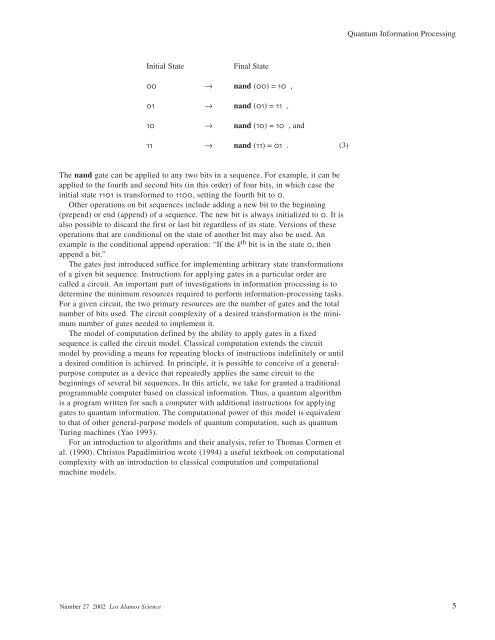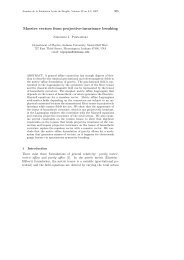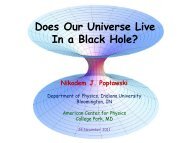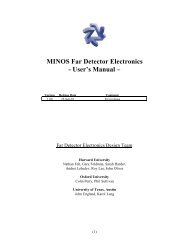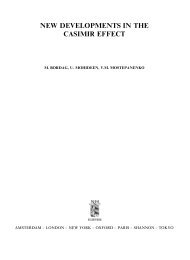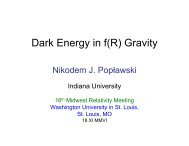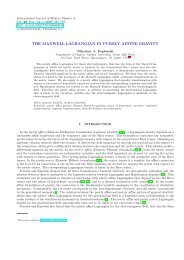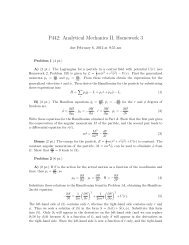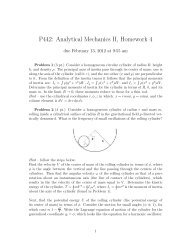Quantum Information Processing
Quantum Information Processing
Quantum Information Processing
Create successful ePaper yourself
Turn your PDF publications into a flip-book with our unique Google optimized e-Paper software.
Initial State Final State<br />
→ nand () = ,<br />
→ nand () = ,<br />
→ nand () = , and<br />
→ nand () = . (3)<br />
The nand gate can be applied to any two bits in a sequence. For example, it can be<br />
applied to the fourth and second bits (in this order) of four bits, in which case the<br />
initial state is transformed to , setting the fourth bit to .<br />
Other operations on bit sequences include adding a new bit to the beginning<br />
(prepend) or end (append) of a sequence. The new bit is always initialized to It is<br />
also possible to discard the first or last bit regardless of its state. Versions of these<br />
operations that are conditional on the state of another bit may also be used. An<br />
example is the conditional append operation: “If the k th bit is in the state , then<br />
append a bit.”<br />
The gates just introduced suffice for implementing arbitrary state transformations<br />
of a given bit sequence. Instructions for applying gates in a particular order are<br />
called a circuit. An important part of investigations in information processing is to<br />
determine the minimum resources required to perform information-processing tasks.<br />
For a given circuit, the two primary resources are the number of gates and the total<br />
number of bits used. The circuit complexity of a desired transformation is the minimum<br />
number of gates needed to implement it.<br />
The model of computation defined by the ability to apply gates in a fixed<br />
sequence is called the circuit model. Classical computation extends the circuit<br />
model by providing a means for repeating blocks of instructions indefinitely or until<br />
a desired condition is achieved. In principle, it is possible to conceive of a generalpurpose<br />
computer as a device that repeatedly applies the same circuit to the<br />
beginnings of several bit sequences. In this article, we take for granted a traditional<br />
programmable computer based on classical information. Thus, a quantum algorithm<br />
is a program written for such a computer with additional instructions for applying<br />
gates to quantum information. The computational power of this model is equivalent<br />
to that of other general-purpose models of quantum computation, such as quantum<br />
Turing machines (Yao 1993).<br />
For an introduction to algorithms and their analysis, refer to Thomas Cormen et<br />
al. (1990). Christos Papadimitriou wrote (1994) a useful textbook on computational<br />
complexity with an introduction to classical computation and computational<br />
machine models.<br />
<strong>Quantum</strong> <strong>Information</strong> <strong>Processing</strong><br />
Number 27 2002 Los Alamos Science 5


